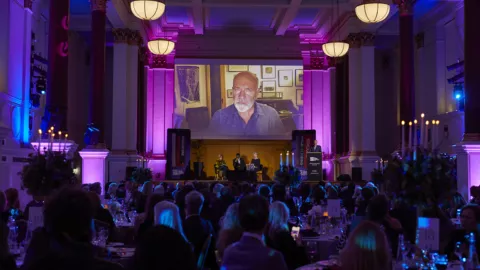
Baillie Gifford Prize for Non-Fiction announces judges for 2025 as submissions open
10 April 2025
How does it feel to be longlisted?
I’m beyond delighted! All books are a labour of love, but for me that is especially true of this one, for particular reasons, so to have it recognised like this means more than I can say. It also pleases the eighteenth-centuryist in me a great deal that Joseph Johnson (who, among much else, was a pioneer of book-related competitions) has found his way onto a book-related longlist.
How did you conduct your research?
I visited archives all over Britain and Ireland and spent years working through the printed primary sources – letters, diaries, working papers – relating to each of the book’s sixty-three-strong cast. In between times I also walked the streets of the City of London, trying to think myself back into the old streetscape visible both in eighteenth-century maps, and – just – as the skeleton of the modern City. I read right across the variety of work Johnson published which was an extraordinary experience: one day I’d be reading a theological treatise; the next a novel, or a medical manual, or a cookery book. And over a period of months I worked my way through the entirety of the Analytical Review – the journal Johnson published – which felt a bit like sitting in his dining room, listening to the conversation. The scale of the research needed to build a picture of the world Johnson made was a bit overwhelming at times, but now I look back on it I realise that it was the privilege of my professional life to have the opportunity to immerse myself in that world so completely.
Why do you think so many extraordinary people were drawn into Joseph Johnson’s world?
That’s such an interesting question. In part I think they followed each other, so that it was natural that in the tight-knit world of eighteenth-century bookmaking Priestley and Franklin would both send their manuscripts to the same man, and that their lead would then be followed by their friends and imitators. You can see that pattern repeating with Anna Barbauld, whose presence on Johnson’s list definitely drew more women writers, and more writers for children, into his orbit. But I don’t think it was just to do with the contingencies of individual relationships. Something about Johnson – and, in particular, about the space he created both in person and print – drew people towards him who had something important and original to say, and who needed the space to say it. At the heart of the answer lies Johnson’s capacity to be interested in absolutely everything, and therefore to make everything and everyone around him more interesting.
Do you feel that Johnson deserves more credit for helping to bring the ideas of so many intellectuals to the world?
Of course! He is the keystone of the story of the transformation that took place in literary culture in the final decades of the eighteenth century: the connecting chain between Cowper and the Romantic poets, the chief employer of Blake and supporter of Wollstonecraft, and without him so many of the voices who are central to our shared literary history simply don’t get a hearing. But it is also the case that with Johnson in the picture literature during this period doesn’t evolve in a vacuum; rather it develops in tandem and in response to the developments he gave voice to in science, philosophy, medicine, politics and art. That’s what is so striking about him – not simply that he enabled the work of an enormous number of important individuals, but that by putting them in conversation with each other he created the conditions in which the work they did took flight.
What are you working on next?
That is mostly a secret, since I am in the very early stages of a new project and don’t want to jinx it. I will simply say that its working title is The Book of Falling Women, and it is about what it means to fall, and what the words are to describe falling, in both the eighteenth century and today.

10 April 2025

17 December 2024

19 November 2024